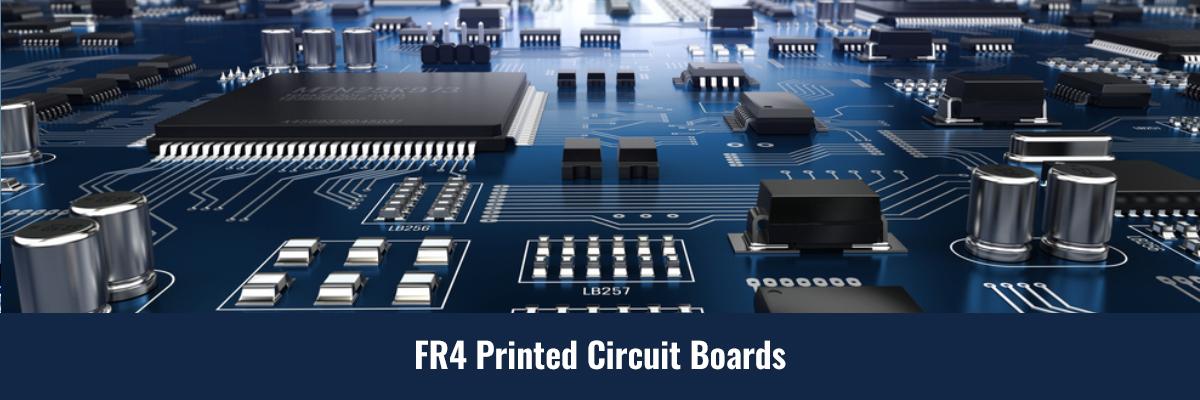FR4 Printed Circuit Boards - Why Should You Choose Them for Your Electronic Applications

FR4 Printed Circuit Boards - Why Should You Choose Them for Your Electronic Applications
The printed circuit boards (PCB) have been an integral part of several electronic circuits for a long time now. So, most electrical engineers involved in the production of these circuit boards are familiar with different materials used to build them. FR4 is one of the most popular materials used to make PCBs. What makes the material popular? The post answers this and various other aspects you may want to know about FR4 materials used in FR4 printed circuit boards.
An Introduction to FR4 Material
FR in FR4 stands for flame retardant, whereas the number 4 differentiates the material from other materials in this class. FR4 is a fiberglass-reinforced epoxy laminated sheet, which looks like a thin, and woven cloth sheet. The term FR4 also stands for the grade used to make these laminated sheets. The fiberglass construction provides structural stability to the material. The fiberglass layer is covered with an epoxy resin that is flame-resistant. This lends durability and strong mechanical properties to the material. All these properties make FR4 printed circuit boards popular among electronic contract manufacturers.
Other Beneficial Properties of FR4 Materials
The FR4 printed circuit boards have also gained popularity owing to the following reasons:
-
FR4 is a low-cost material.
-
It has a high dielectric strength which contributes to its electrical insulation properties.
-
The material has a high strength-to-weight ratio and is lightweight.
-
It is moisture resistant and has relative temperature resistance as well.
-
The material has good electric loss properties.
-
FR4 doesn’t absorb water, which makes it suited for various marine PCB applications, too.
-
The material is yellow to light green in color, which perfectly goes with any application.
All these properties make it suitable in a variety of environments.
How is FR4 Organized in a Regular FR4 printed circuit board?
FR4 serves as the base of any PCB. The material is laminated with copper foil layers. This lamination is performed using heat as well as adhesives. The copper foil may be used to laminate the material from one or both sides.
Tips to Select the Right FR4 Material for Your FR4 Printed Circuit Board
Using the material in the right thickness is important for building an FR4 PCB. The thickness is measured in inch-based units such as thousand, inch, or millimeters. There are several things to be considered when choosing FR4 material for your PCB. The following tips will ease your selection process:
-
Choose a thin FR4 material for building boards with space constraints. The thin material can support various delicate components required to build devices such as Bluetooth accessories, USB connectors, and so on. They are also suited for larger projects where engineers want to focus on space-saving designs.
-
A thin FR4 material is suited for applications that demand flexibility. For instance, using a thin material for automotive and medical PCBs is ideal because these PCBs require regular flexing.
-
Avoid choosing thinner materials for PCB designs featuring grooves as there is a higher risk of damage or board fracture.
-
The thickness of the material can affect the weight of printed circuit boards, and they may also affect component compatibility. This means, a thin FR4 material will logically contribute to lightweight boards, which will lead to lightweight electronic products. These lightweight products are attractive, and easy to ship.
When to Avoid FR4 Material
FR4 material is not the right choice if your application demands any of the following:
-
Excellent temperature resistance: It is not recommended to use FR4 material if the PCB is to be used in high-temperature environments. For instance, FR4 material is not the right choice for PCBs used in aerospace applications.
-
Lead-free soldering: If your client demands an RoHS-compliant PCB, then lead-free soldering must be used. During lead-free soldering, the reflow temperatures may peak and reach up to 250 degree Celsius, and owing to its low-temperature resistance FR4 material cannot withstand it.
-
High-frequency signals: When exposed to high-frequency signals, FR4 boards fail to maintain a steady impedance. As a result, fluctuations occur, and it may affect the integrity of signals.
Owing to their popularity and widespread use, today, it is easy to find FR4 PCB material with diverse specifications and capabilities in the market. With such an abundance of choice, the selection sometimes becomes difficult. In such situations, it is important to discuss your requirements with your manufacturer. Twisted Traces is one of the leading manufacturers of FR4 printed circuit boards in the US. The company has been helping its clients in making the right material selection, since inception.
.png)


.png)